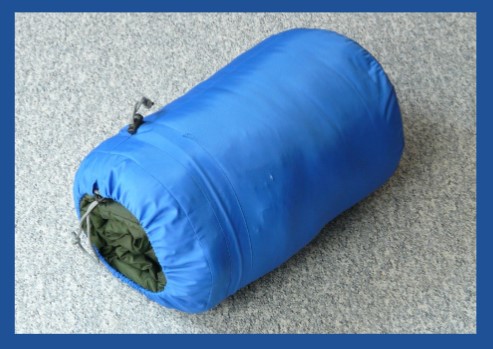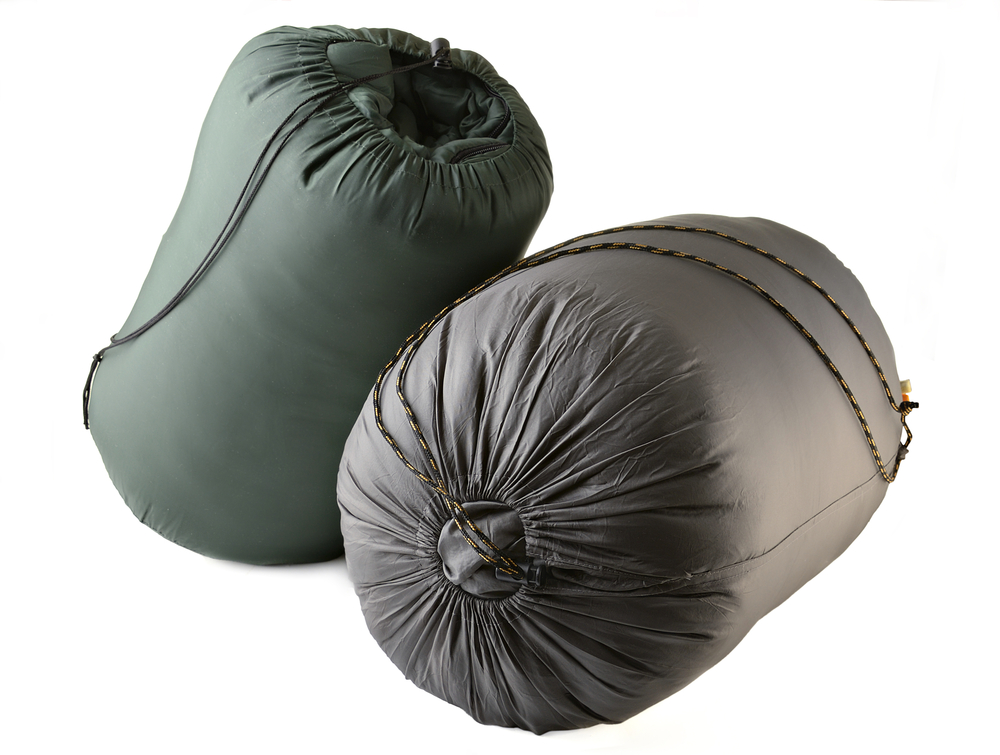How To Store A Sleeping Bag The Right Way | Full Guide

A sleeping bag is a piece of equipment that helps keep you warm at night while you sleep. You may have seen them in stores or online, but what exactly do they do? How do they work? What makes them different than regular blankets? Let’s take a look!
The Basics
A sleeping bag is basically a blanket that keeps you warm at night. There are many types of sleeping bags out there, but the two most popular ones are down-filled and synthetic. Down-filled sleeping bags are filled with feathers, down, or goose down. These are generally the best type of sleeping bag if you want something that is lightweight, breathable, and comfortable. Synthetic sleeping bags are filled with polyester fibers and are great for people who don't want to use any kind of feather or other types of fabric.
Down-Filled Sleeping Bags
Down-filled sleeping bags are the most popular type of sleeping bag. They are filled with feathers, goose down, or some combination of both. Down-filled sleeping bag tend to be heavier than their synthetic counterparts, but they are much warmer. Down-filled bags are generally thicker and sturdier than synthetic sleeping bags. Down-filled sleeping sack are also more expensive than synthetic sleeping bags.
Synthetic Sleeping Bags
Synthetic sleeping bags are lighter than down-filled sleeping bags. They are not as thick or sturdy as down-filled sleeping bags, but they are cheaper than down-filled sleeping sacks. Synthetic sleeping bags tend to be thinner and fluffier than down-filled sleeping packs. They are also less durable than down-filled sleeping bag.
How Do They Work?
When you put a down-filled sleeping bag over yourself, the air inside the sleeping bag gets trapped between the down and your body. When you get cold, the trapped air expands and creates warmth. If you are using a synthetic sleeping bag, the air doesn't trap as well, so you won't stay warm as long.
Sleeping Bags vs. Blankets
There are pros and cons to each option. Down-filled sleeping packs are warmer than synthetic sleeping bags, but they weigh more and are bulkier. Synthetic sleeping bags weigh less than down-filled sleeping pack, but they aren't as warm. Both options are good for keeping you warm at night, but if you're looking for something that's lightweight, breathable, warm, and comfy, then you should probably go with a down-filled sleeping sack.
Sleeping bags
A sleeping bag is a type of blanket that is designed to keep you warm at night. There are many different types of sleeping bags out there, including down-filled, synthetic, insulated, and others. Down-filled sleeping bags are considered the best option for camping since they provide warmth while keeping you dry. Synthetic sleeping bags are great if you want something lightweight and durable. Insulated sleeping bags are good for people who need extra insulation. If you're looking for a sleeping bag that keeps you warm without weighing you down, then consider using a synthetic sleeping bag.
Blankets
Blankets are blankets that cover you. A blanket is a piece of fabric that covers you and provides warmth. You can use a blanket to stay warm at night, especially if you live in a cold climate. Blankets are often used in conjunction with sleeping bags. Many people sleep under a blanket and then add a sleeping bag over top of them.
Where To Buy Them
You can find down-filled sleeping bags in department stores, camping gear shops, and even big box retailers. You can also buy them online. Down-filled sleeping pack are generally more expensive than synthetic sleeping packs.
How To Store A Sleeping Bag | 4 Steps
Step 1: Wash the sleeping bag.
Wash the sleeping bag thoroughly before storing it. You want to remove any dirt, debris, or stains that may have accumulated over time. If you don't wash the sleeping bag first, then it could potentially attract mold and mildew.
Step 2: Dry It Out.
Dry the sleeping bag completely. You don't want moisture in the sleeping bag. Moisture can cause mold and mildew to grow. So if you live in a humid area, you may need to dry it out even further.
Step 3: Air It Out.
Air the sleeping bag out for at least 24 hours after washing it. This helps remove any lingering odors.
Step 4: Store it in a dry location away from moisture.
You should store your sleeping bag somewhere where it won't get wet. If you live in a humid area, you may need to store it in a garage or basement. Make sure that the room is well ventilated and not near any windows.
Storage Location Ideas
![two sleeping bags in storage]()
Image provided by: depositphotos.com
Your car
If you have a vehicle, chances are you've got a trunk. Why not use it? If you're going camping, you can also store your gear in the back seat instead of the trunk. You could even put some blankets down on the floorboards if your floorboard is clean.
A closet
Your bedroom closet is probably the best place to stash a sleeping bag. There's no need to worry about bugs or rodents getting at it either. Just make sure you keep it away from any flammable materials.
Underneath the bed
You may think that under your bed is a bit creepy, but it's actually a great spot to hide things. If you're worried about someone stealing your gear, just tuck it underneath the bed. Before doing this, be sure that under your bed is extra clean. Some times we forget to clean under the bed when we are doing spring cleaning or regular cleaning. I am also guilty of this sometimes.
In the garage
The garage is a good option if you live in a climate where temperatures don't drop below freezing or get too hot. Make sure you secure your belongings well though.
On top of the refrigerator
This is a great option if you're planning to go camping in the summertime. You won't have to worry about the temperature dropping too low, and you can easily access your gear whenever you need it.
In the attic
It's always nice to have a backup plan. If you ever lose power, you can retreat to the safety of your attic.
In the basement
If you live in a house with a finished basement, then you should definitely check out your options here. You can use it as a safe haven if you ever get caught in a storm.
In a storage locker
If you have access to a storage locker, you can use that area to store your sleeping bag. Be careful not to leave anything valuable in the locker.
In a shed
If you have a garage or a workshop, you can store your sleeping bag inside. Just make sure that everything is locked up tight.
Tips for storing your sleeping bag
- Always store sleeping bags in a dry place. If possible, keep them away from direct sunlight.
- Do not use plastic bags to protect your bag. Plastic bags may melt if exposed to high temperatures.
- Never leave your sleeping bag outside overnight.
- When storing your sleeping bag, make sure it is completely zipped and closed.
- Make sure your sleeping bag is clean before using it again.
- Wash your sleeping bag regularly.
- Use a sleeping bag liner to help prevent mildew and mold.
- Keep your sleeping bag out of direct contact with water.
- Avoid leaving your sleeping bag in damp places.
- Remove any dirt or debris from your sleeping bag before putting it back in storage.
- Check your sleeping bag periodically to ensure it remains comfortable and durable
Storing Your Sleeping Bag Properly
When storing your sleeping bag, make sure that it is not stored in direct sunlight. Direct sunlight can cause the fabric to fade over time. Make sure that you store your sleeping bag away from any chemicals. Chemicals can ruin the material of your sleeping bag.
Do I need to vacuum my sleeping bag?
Yes, you do. Vacuuming your sleeping bag helps remove dirt and debris from the fabric. However, if you've been camping or hiking, you might find some stains on the material. In these cases, you'll need to wash it instead. Washing will get rid of any stains or odor that might linger.
Can I store my sleeping bag in the garage?
Garage temperatures tend to get pretty hot or cold depending on the location, especially at night. Your sleeping bag could become damaged if stored in the garage.
There are however some garages that could be perfect for storing your sleeping bag. These garages are ones that are temperature controlled. This means you will be able to set the temperature year-round.
Subscribe
Stay updated with our newsletter
Conclusion
Sleeping bags are great for camping, backpacking, and hiking. They are lightweight, durable, and affordable. There are many different types of sleeping bags out there, each designed for a specific purpose. I hope this article helped you out.


